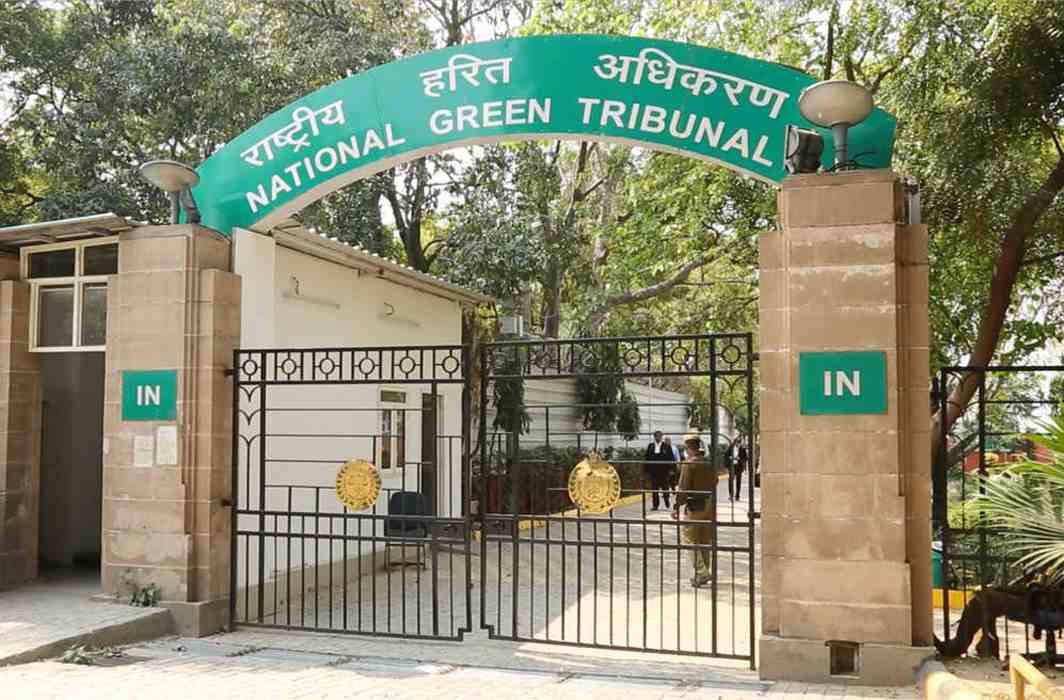The National Green Tribunal has refused to close the oversight committee and extended its term for six months and directed the State of Uttar Pradesh to put forward its suggestion while hearing the matter pertaining to monitor the pollution of River Ganga and sand mining activities around other rivers in the state.
The Oversight Committee is constituted on the suggestion of the State of UP by the Tribunal for a period of six months which was subsequently extended at different intervals. The basic functions of this committee are to monitor pollution of River Ganga, rejuvenation of river Hindon and associated issues, sand mining at Allahabad, pollution of thermal power stations in Singrauli, pollution of Ramgarh Lake and River Ami in Gorakhpur, Solid and Biomedical Waste Management norms, etc.
A bench headed by NGT Chairperson Justice Adarsh Kumar Goel has further requested the committee to monitor compliance of directions to oversee preparation of District Environment Management Plans and their execution by the District Environment Committees.
In its previous order, the NGT asked the Oversight Committee to give its report on the current status with some recommendations presented by it on July 4, 2020, are as follows,
“1. Environmental Clearance takes into account all the environmental concerns. Mining plan is the instrument through which it is enforced. However, for mining activity going on illegally, there is neither any EC nor any mining plan. Illegal mining invariably leads to reckless damage to environment.
Hence, utmost efforts are required to check illegal mining through surveillance, patrolling and enforcement.
2. In District Prayagraj, there is only one operative lease out of 51 leases and that too for more than one year. Areas where only a few leases are operative and the rest are not settled/surrendered need to be carefully watched. There could be a chance of cartel formation and mining of sand illegally from other vacant mining plots under the garb of the operative lease.
3. DSRs need to be prepared very carefully. They should be based on physical surveys and replenishment studies. Since sand deposition is a dynamic issue, they need to be regularly updated. While awarding lease deeds, important environmental parameters like deposition and replenishment of sand, areas of erosion, distance from infrastructural structures need be considered.
4. In the absence of replenishment studies and physical inspection before award, many times sites are awarded where there is no sand. The leaseholder indulges in mining adjoining areas, some of which may be environmentally not very suitable. Before the award of LOI, physical inspection should be mandatory.
5. Electronic surveillance through UAVs/Remote Sensing is a good surveillance option especially in areas where sand mafias are active. Night vision drones must be used for checking mining activity at night. Sensitive spots must be identified and police presence- both static presence and dynamic patrolling needs to be beefed up there. DMs/SSPs must be made directly responsible for checking illegal mining.
6. Storage godowns should be at least 5 km away from the river bank. Otherwise illegal mining can be carried on under the garb of storage by the leaseholder himself.
7. Geo-fencing of sites, their physical demarcation, allotment of geo-coordinates to all the pillars and their constant physical inspection and electronic surveillance is a must to ensure that the mining activity is as per the approved mining plan and no illegal mining, detrimental to the environment, is going on.
8. There has to be a mechanism to ensure that the actual mining activity conforms to the approved Mining Plan and the approved Environment Management Plan (EMP). Besides the statutory system of departmental inspections, there has to be a system of annual mandatory environmental audits by experts. Environment Department can impanel some experts/expert institutions with standard TORs and Remuneration terms which could be utilized by the Mines Department on a regular basis. This way the District Administrations can access good technical experts with standard conditions in a transparent way without bothering about tedious time consuming tender formalities.
9. There has to be an effective mechanism for the restoration of the environment in case of its degradation due to mining. A portion of the royalty could be reserved for it as Environment Restoration Fund. The Environment Department can impanel some reputed institutions with standard terms for preparing environmental restoration plans which could be used directly by the Mining Department without the arduous formalities. These plans could be funded by the Environment Fund as mentioned above. Already a number of mineral-rich districts like Sonbhadra have a sizeable District Mineral Fund at the disposal of the District Collector. However, since there is no mechanism available at the level of District Collector for the preparation of Environment Restoration Plans, this fund is normally used for works other than environmental restoration.
10. The mining activity should strictly comply with Provisions of EIA Notification 2006, Sustainable Sand Mining Guidelines, 2016; The Environmental Protection Act, 1986; The Water (Prevention and Control of Pollution) Act, 1974; The Air (Prevention and Control of Pollution) Act, 1981 and Regulations of Central Ground Water Authority.
11. As per Hon’ble NGT orders it was directed that Chief Secretary must ensure compliance with Sand Mining Guidelines. The Oversight Committee recommends periodic review at CS level which will automatically improve enforcement effort and sort out a number of coordination issues.”
On the basis of the recommendations made by the OC, NGT has directed the District Magistrate, Prayagraj to take further steps in the matter and maintain surveillance. The issue of compensation, if not already finalized, may be finalized with the assistance of the CPCB and the report should be furnished to the Oversight Committee.
Also Read: NGT directs Centre to undertake safety audit of all thermal power stations
The matter is scheduled for hearing on March 18, 2021 next.


